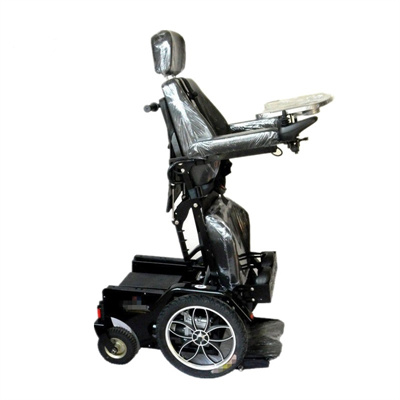Standing wheelchairs are transformative mobility devices that offer users the ability to stand upright, promoting physical well-being, social interaction, and improved quality of life. Let’s dive into the features, benefits, and impact of standing wheelchairs:
- Revolutionary Design: Standing wheelchairs are ingeniously designed to transition smoothly from a seated position to an upright stance. Advanced mechanical systems and motors facilitate this movement, providing users with newfound mobility freedom.
- Health Benefits: The ability to stand has numerous health advantages. Weight-bearing through the legs helps maintain bone density, improves circulation, prevents muscle contractures, and supports proper digestion.
- Improved Respiratory Function: Standing encourages deeper breathing and lung expansion, benefiting respiratory health and reducing the risk of complications associated with prolonged seated positions.
- Enhanced Circulation: Standing promotes blood flow throughout the body, reducing the risk of pressure sores and enhancing overall vascular health.
- Bone Health: Weight-bearing promotes bone density, which is crucial for preventing osteoporosis and fractures in individuals with mobility challenges.
- Social Interaction: Standing eye-to-eye with peers fosters social inclusion and engagement. Users can participate in conversations, activities, and events without feeling physically distant.
- Functional Independence: Standing wheelchairs provide users the ability to independently perform tasks at various heights, such as reaching shelves, countertops, and switches.
- Psychological Well-Being: The psychological impact of standing should not be underestimated. Being upright can boost self-esteem, reduce feelings of isolation, and contribute to a positive self-image.
- Pain Management: Individuals with conditions such as spinal cord injuries often experience chronic pain. Standing can alleviate discomfort by shifting pressure away from sensitive areas.
- Customized Comfort: Standing wheelchairs can be tailored to individual preferences, allowing users to adjust the standing angle, support level, and other factors for maximum comfort.
The introduction of standing wheelchairs represents a significant leap forward in assistive technology, enhancing users’ physical health, emotional well-being, and overall quality of life.














